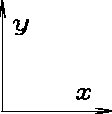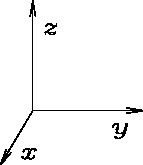Solutions to Laplace's Equation:

2D Cartesian:  |


|
3D Cartesian: 
|


|
2D Plane Polar: 
|


|
3D Cylindrical: 
|


where |
3D Spherical: 
|


where and
If axial symmetry then
|
2D Cartesian:  |


|
3D Cartesian: 
|


|
2D Plane Polar: 
|


|
3D Cylindrical: 
|


where |
3D Spherical: 
|


where and
If axial symmetry then
|